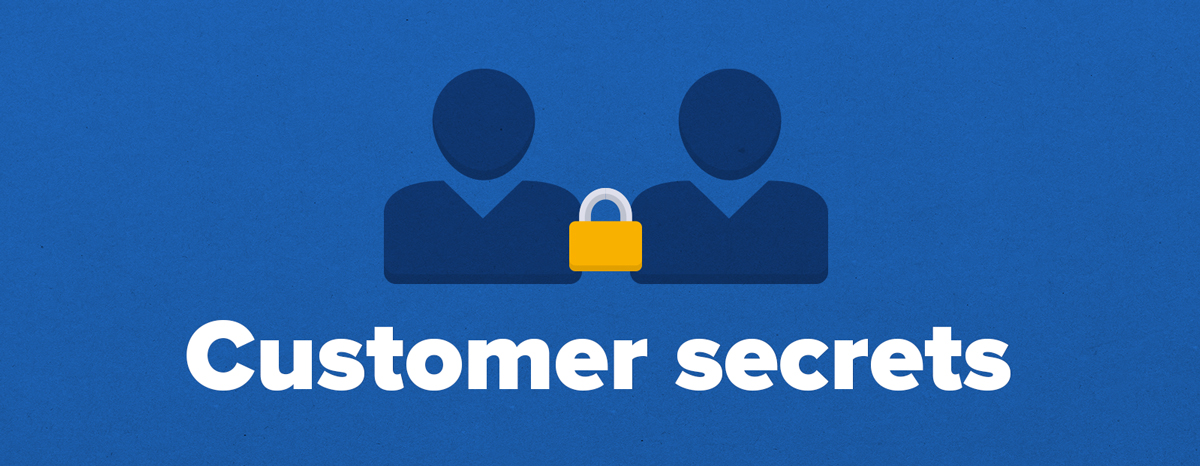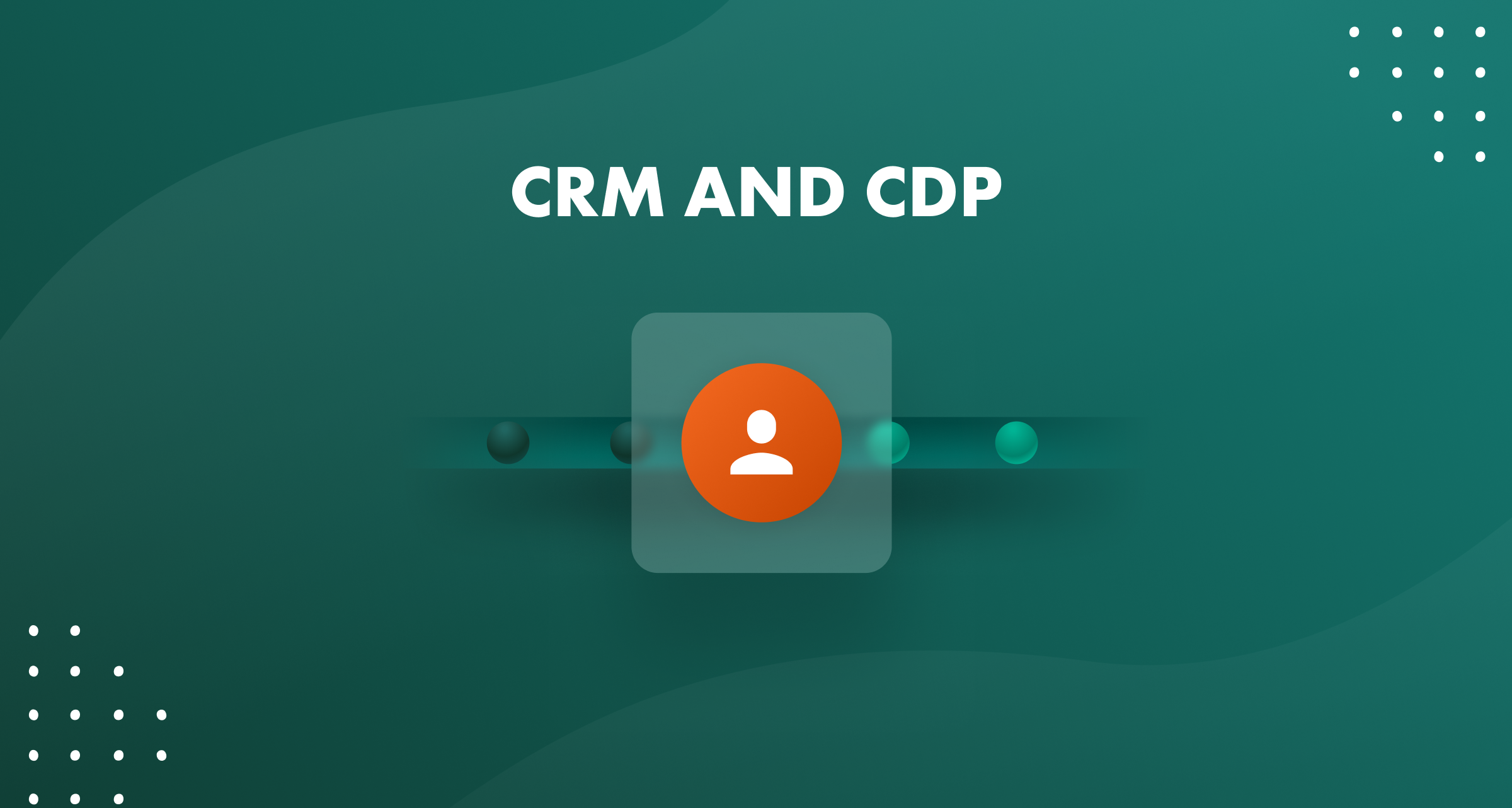Post summary:
- Stop customers from leaving
- How to discover up-selling opportunities
- Using a CRM database for personalization
Access to customer data.
Almost every company has it.
The challenge is that 41% of companies currently struggle in tying customer data to business action, according to Search Business Analytics.
And let’s face it:
There’s little use in having data if you don’t make it work for you, is there?
But that’s not what CRM is about.
On the contrary!
Customer Relationship Management (CRM) is about making the best use of your data and discovering valuable customer insights about your customers, how they are marketed to and how they respond. And then turning those insights into successful business decisions.
That is why CRM software is important.
According to Software Advice, 74% of businesses indicate that CRM software allows them to have greater access to customer data.
And research by Accenture confirmed that high-performing businesses — those that substantially outperform over the long term — are five times more likely to use customer data compared to low performers.
Looking at your CRM database can really help you uncover your customer secrets and identify areas of opportunities for business growth. That's well worth the effort, isn't it?
But the big question is this:
What do you really need to look at to know who your customer are, what your customers want, and how do you benefit from that information?
In this blog post, we'll look at some of the ways you can use your CRM database to unlock customer secrets.
1. Use a CRM database for personalization
Each customer you have is different. They have different preferences when it comes to communication and their buying habits. And more importantly, they want to be treated like an individual.
73% of consumers prefer to do business with brands that use personal information to make their shopping experiences more relevant, according to Digital Trends.
And a study by Infosys found that 86% of consumers say personalization plays a role in their purchasing decisions.
This is where you can use the information you store in a CRM system. Because it’s not just names, addresses and telephone numbers! All of your interactions with customers are recorded there.
Use it to your advantage by addressing your customers by their names, and incorporate the data that you know about them showing that you treat them individually. You can suggest an idea, give information, and even shape the entire communication in such a way that it suits that particular customer.
Personalize your communication, and you will see how your customers’ perception of your company starts to improve.
2. Identify your top customers
Not all of your customers are equal. Far from it.
Some earn you more profit than others. And some might even waste your time.
According to the Pareto principle: 80% of your profits come from 20% of your customers.
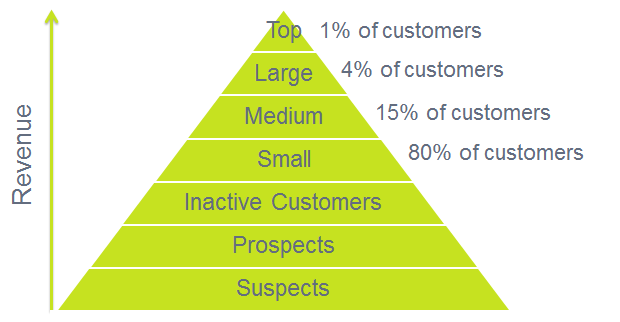
Therefore, you really want to focus on those 20% of customers who are essential for your business!
CRM software provides analytical tools that can help you identify your top customers. It can also help identify the customers who are taking up most of your time – the customers that aren't vital for your company!
Using this information, you’ll get to know who your top customers and top time wasters are. This way you can better manage your workflow and allocate your resources to make sure that your top customers are getting the attention they need, which in turn means higher customer retention.
By checking your CRM, you can discover the list of the hassle-free customers who bought more frequently and spent the most money - that’s your 20 percent. Focus on them. Treat them well, take them out for lunches. In fact, by giving them more attention, you might even uncover more business opportunities with these customers.
Your CRM software also holds the information on the problem customers. They rack up customer complaints and requests and chew up most of your time. In fact, they cost more money to service them than they actually make you. These are the customers you’d like to paddle away from eventually.
3. Learn how to win and close more deals
Have you ever wondered how you actually sell?
As in, what the exact steps are from when and where you make contact all the way through to closing a deal?
Or more importantly, do you know if the things you do to win a sale are actually working?
If you were to dig deeper into what you are doing when selling, you would also start to understand which sales tactics really help advance the deal and which do not. And who doesn’t want to know that?
To do this, you need to look at your CRM database.
Each action you take and every document you send is logged into your CRM system. Start by observing the last few deals that you closed. What were the major steps in the sales process and touch points with the customer? How long did the entire process take, and how much time passed between each step?
If you find out that some tactics you use generate a higher close rate, you’d find ways to make that part of every sales process. Likewise, if you see that some actions you are taking have zero impact for your prospects and only make your sales cycles longer, you can stop doing it.
After defining all the actions, you’ll really know what clicks with your prospects and moves them to the next stage. And then you can follow that successful sales process every time you’re trying to close a deal.
4. Discover upselling opportunities
Do you know anyone in sales who doesn't want to increase revenue?
Me neither!
One of the best ways to do that is to persuade your customers to buy bigger and better. But you don’t want to just bombard them with random product offers to the point where they become frustrated or annoyed.
Upselling is far more advanced than that!
To get the best results, you need to anticipate the customer’s needs and interests and offer them opportunities to enhance their experience. And this is where a CRM earns its keep.
How so, you ask?
In a 2015 study by Capterra, 39% of polled CRM users cited upselling in their companies was significantly impacted by using CRM.
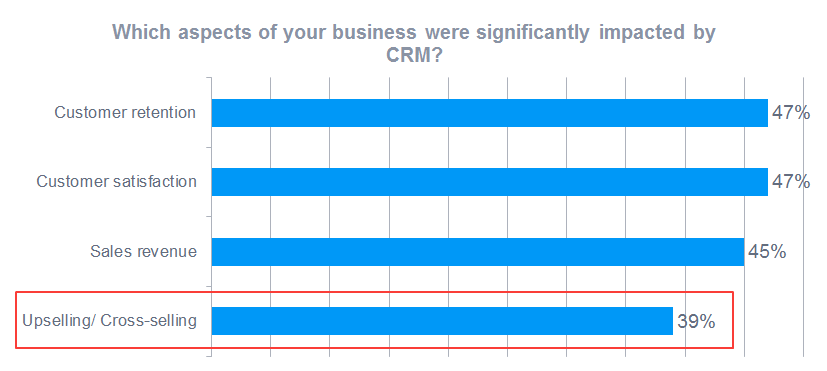
There’s a real potential hidden among your existing customers.
And you can discover it by exploring your CRM data!
CRM offers you a 360 degree view of the customer that shows all contacts, deals, complaints, contracts and open/ closed activities. By analyzing this information, you can pinpoint what the customer is likely to purchase based on past purchases and existing requirements.
For example, if their purchase history shows that they buy high-value items consistently, they may be less likely to pay attention to a sales pitch on a cheaper product. Likewise, if they tend to prefer lower-value products, your CRM database will show you that this is a budget-conscious customer and there’s no use of trying to sell a top of the range product to them.
Your CRM tells you what kind of product or services a certain customer has, and how long they have them for. The system can send reminders to you before the contracts up for the renewal. This way you can upsell your customers at the right time.
5. Keep your customers from leaving
There’s a lot of focus on increasing sales in the business world.
But keeping the customers you already have is a goal less talked about.
This is surprising because customer churn – the loss of customers – can crush your business.
If you let it, that is.
If you do something about it, you can actually see a very positive impact for your business. According to the Kini Group reducing customer churn by 5% can increase your profits by 25% to 95%.
Now that’s a goal worth talking about!
And that’s when your CRM can become even more useful to your business, as it doesn’t only provide you with data about your current customers; it can also tell you about the ones that have churned.
If you compare the data between loyal and broken relationships with your customers, you can gain valuable information to help you understand what is working, which you can use to avoid higher churn rates in the future.
In fact, companies turn to CRM to find the truth of customer engagement.
A report from Gleanster and Act-On found out that 99% of top performers in B2B use CRM for customer retention.
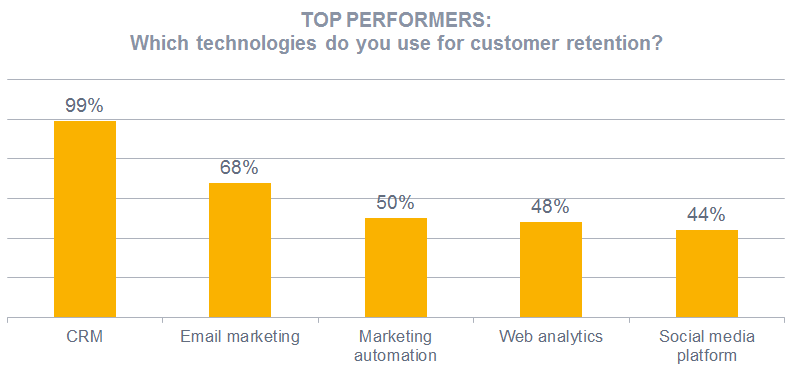
The data you store in CRM enables you to recognize behavioral patterns and unearth insights in how to prevent your customers from leaving. By having access to those insights, you can resolve your customer issues faster. By the end of it, even if the problem is not resolved, the customer might still end up having a great experience just by feeling understood.
Conclusion
Customers value any offering—and, by extension, any business—that addresses their needs and desires.
Your CRM database is the key to achieving that.
Remember, the main benefit of having a CRM system in place is to manage the relationship you have with your customers – past, present and future – in order to increase your sales and grow your business.
How?
By using everything your CRM database has to offer!
By leveraging your CRM data, you can unlock many secrets that will help you retain your best customers and acquire more customers just like them.
Put your CRM database to work and use it to increase the size and the frequency of each purchase. Explore it to present highly targeted marketing promotions and identify upsell opportunities that are relevant and timely to each customer.
And lastly, use your CRM database to create an all round exceptional customer experience strategy
You see? The possibilities are endless.
How do you use your CRM database?
Let us know in the comments below.
P.S. If you enjoyed reading this post, don't forget to tweet about it here!
Is your existing CRM system failing you?
If so, then schedule a meeting with one of our dedicated CRM experts to see how we use CRM to grow our business.
